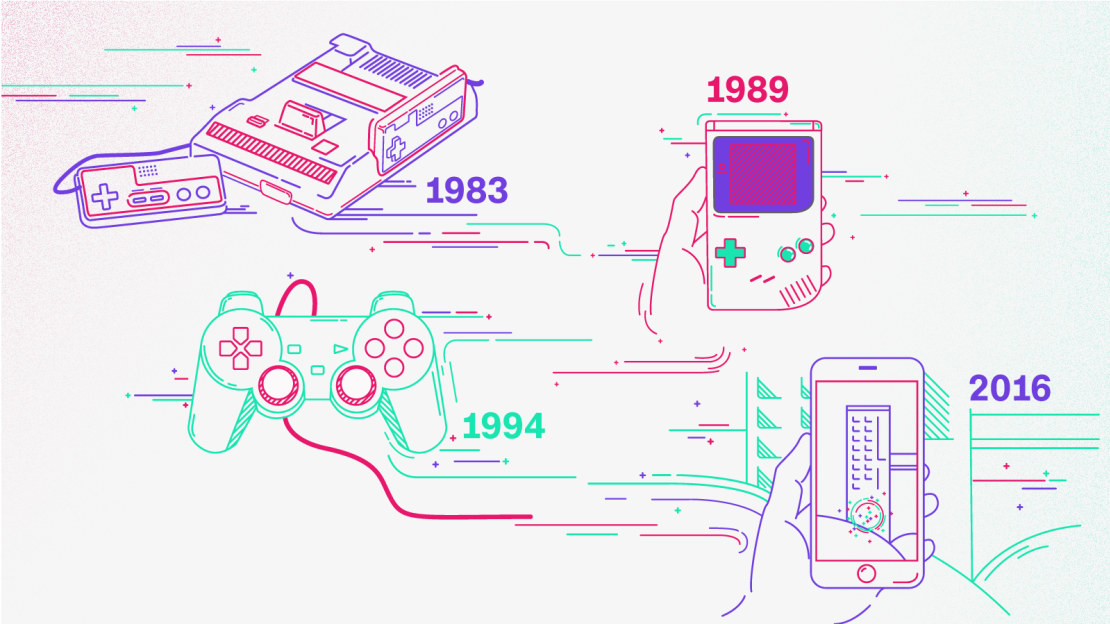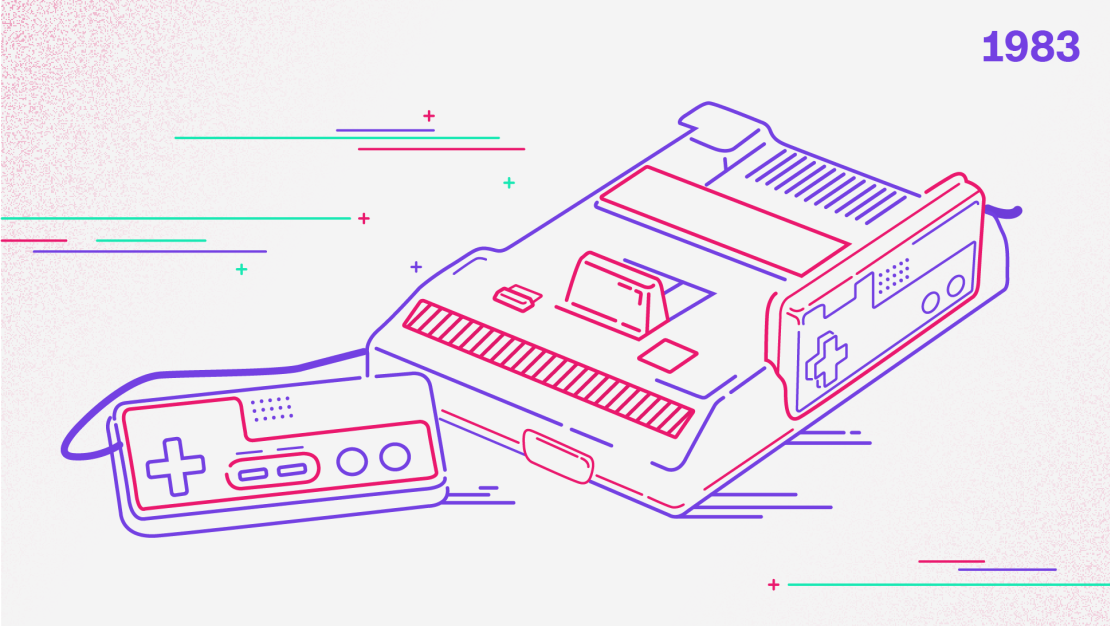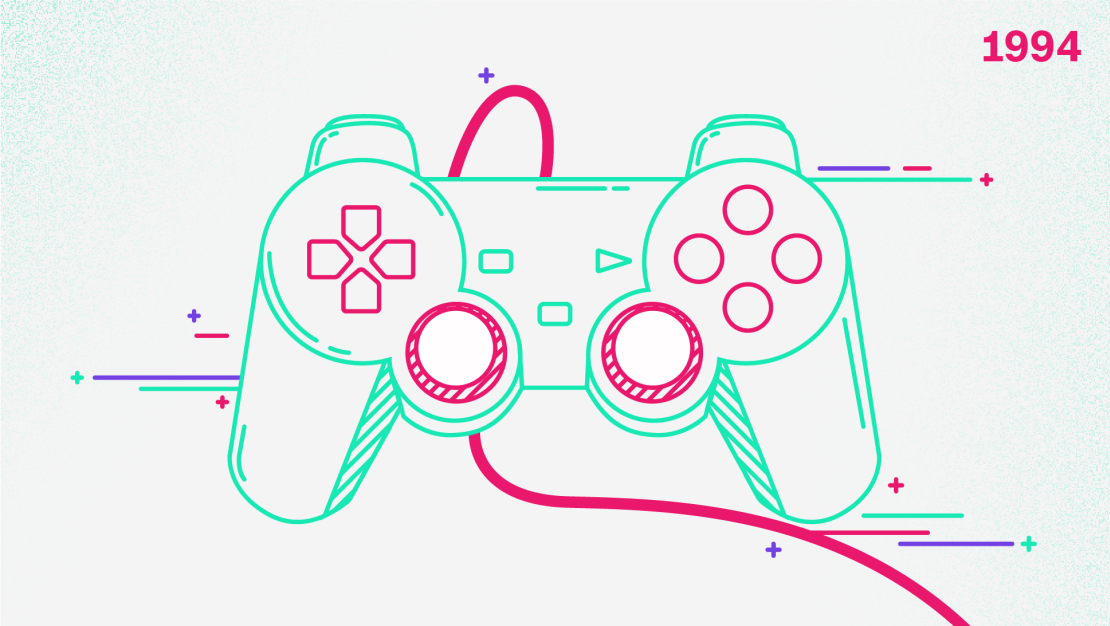Japan didn’t invent the first computer game. That accolade goes to “Space War!”, a game created in 1962 at the Massachusetts Institute of Technology in the United States.
But ever since then, Japan has embraced gaming culture with an almost unrivaled passion. From the Super Mario and Sonic the Hedgehog games that became cultural giants, to the Sega Mega Drive and Game Boy consoles which were symbols of their time, gaming was led by Tokyo for decades.
“Without the contributions of Japan, we wouldn’t have a video game industry,” Blake J. Harris, a video game expert and author of “Console Wars,” says. “Or, at least, not one that resembles what we have today in any way.

“From hardware to software, controllers to culture, no country has had a bigger influence on console gaming.”
After decades of dominance, however, Japan’s cultural clout waned during the early 2000s.
“As the appeal of video games grew larger and larger, it’s not surprising that the culture – and development – would no longer be dominated by a specific region,” explains Harris.
A renaissance, however, could be upon us with Japanese giants Sony and Nintendo both making comebacks.
Released in 2013, Sony’s PlayStation 4 became the best-selling home console of this generation in just 18 months, and so far it’s the only one that can be paired with a virtual reality headset – the Sony PSVR, which has sold over one million units.
Nintendo is also breaking new ground with the Switch, a hybrid between a home console and a handheld device, while its accompanying “Legend of Zelda” game has received widespread critical acclaim.
Here, CNN picks the eight most important Japanese video game inventions of all time.
Space Invaders スペースインベーダー (arcade game by Taito) 1978
One of the first arcade games, “Space Invaders” ignited the video game craze in Japan.
The very first “Star Wars” movie had hit theaters weeks before its release, and that cultural event combined with the game’s simple formula – shoot descending aliens with a laser cannon – made it an instant hit.
“It was such an enormous success that, for a time, it was believed to have caused a shortage of 100-yen coins in Japan – only a rumor, but one that shows how popular ‘Space Invaders’ was,” says Harris.
By the end of 1978, Taito had made $600 million in Japan and installed 100,000 Space Invader machines – with some arcades dedicated solely to the game.
“Space Invaders” introduced the now-common game mechanic of enemies moving faster as the player shoots them, but the popular feature was, surprisingly, the consequence of hardware limitations rather than design preference: as the player shot aliens off the screen, the CPU had fewer objects to render and could therefore process the game faster.
Pac-Man パックマン (arcade game by Namco) 1980
Pac-Man
Released just two years after “Space Invaders,” “Pac-Man” entered a market dominated by shoot ‘em-ups and pioneered the “maze chase” genre, which has since been imitated countless times.
“If Space Invaders put gaming on the map, ‘Pac-Man’ showed that this medium was here to stay,” says Harris.
In the late 1990s Twin Galaxies, which tracks video game world record scores, visited used game auctions and counted how many times the average “Pac-Man” machine had been played. Based on those findings and the total number of machines that were manufactured, the organization estimated rthat the game had been played more than 10 billion times in the 20th century.
Its creator, Toru Iwatani, once jokingly circulated the story that the ghost-eating yellow blob was inspired by a pizza with two slices removed, but later revealed it comes from a rounded version of the Japanese character for “mouth,” which looks like a square.
Originally titled “Puck Man,” the name was changed so that in America nobody could cheekily vandalize the “P” into an “F” on the arcade cabinets.
Family Computer ファミリーコンピュータ (home console by Nintendo) 1983

Better known as the Famicom, this console quickly became a Japanese icon: “It was such a success that by the end of the decade, a Famicom could be found in 37% of Japan’s homes,” says Harris.
But in 1983, when the Famicom launched in Japan, video games were facing a crisis in the US: a flood of poor quality products, rushed out to cash-in on the video game craze, was alienating customers.
Consequently, Nintendo waited two years before releasing the Famicom in America. For the US market, it remodeled the console to look more like a VCR – a popular machine at the time – and renamed it the Nintendo Entertainment System (NES).
The quality of the software did the rest, and the NES revived the US gaming industry.
“Through several now-iconic games such as ‘Super Mario Bros’ and ‘The Legend of Zelda,’ the NES came to define gaming in the 1980s,” says Harris. It went on to sell over 60 million units.
The only downside? The recessed cartridge slot, a VCR-inspired feature, accumulated dust and originated the ritual of blowing into the cartridge before use – apparently just making the problem worse as that oxidized the copper contacts.
Game Boy ゲームボーイ (portable console by Nintendo) 1989

Having revolutionized the home console market, Nintendo turned its attention to mobile gaming, then dominated by its popular but unsophisticated “game-and-watch” devices – simple wrist watches that featured a single game.
The Game Boy revolutionized the handheld scene, and its design became an icon of the era.
“The Game Boy used cartridges and was capable of playing hundreds of titles,” says Harris. The specifications were poor compared to normal consoles – the monochrome screen had just four shades of gray – but that allowed for great battery life and lower prices, which turned out to be what people looked for in a portable system.
Initially, Nintendo had wanted to include a Mario game with the retail version of the console, but was later persuaded to acquire the rights to an obscure Russian game, developed by Alexey Pajitnov in 1984, called Tetris.
A runaway success, Tetris made the Game Boy popular with adults and kids.
Sonic the Hedgehog ソニック・ザ・ヘッジホッグ (game for the Sega Mega Drive) 1991
Sega, the other big name in Japanese gaming, needed a breakthrough to stay competitive with Nintendo.
It decided to create its own answer to Nintendo’s Super Mario, who had debuted in 1981 as Jumpman in the “Donkey Kong” arcade game and been a hit. After an internal competition, a hedgehog was picked due to its ability to curl into a ball and sprint – a handy mechanic in a game.
“Many other game companies tried to replicate this success and create a ‘mascot character’ of their own, but for years these efforts were met with nothing but failure,” says Harris.
The popularity of the fast-paced Sonic games made the Mega Drive (known as the Genesis in the US) a strong competitor to Nintendo’s Super NES, starting the “console war” that would characterize the 1990s.
That battle was ultimately won by Nintendo, as Sega stopped making home consoles after 1998’s Dreamcast, but Sonic had given Sega the necessary boost and paved the way for one of the best-selling video game franchises, with over 140 million copies sold to date.
Sony PlayStation プレイステーション (home console by Sony) 1994

In 1988, Nintendo and Sony started collaborating on a supercharged version of the Super NES, capable of playing both regular cartridges and a new disc format. Nintendo was interested in the rising CD-ROM technology, which Sony was standardizing at the time with Philips. Sony, it was decided, would brand and produce the console, taking the Japanese electronics giant into the lucrative video game market.
But after it was announced at the 1991 Consumer Electronic Show in Las Vegas, the deal fell apart over a revenue sharing dispute. The “Nintendo Play Station” never materialized, but Sony reworked that idea into its own console, which used regular CD-ROMs.
CDs were far cheaper than cartridges and offered greater storage space. “This format not only made games cheaper to produce,” says Harris, “but also allowed developers to create cutting-edge games like ‘Tomb Raider,’ ‘Tekken 2’ and ‘Grand Turismo.’
“With an impressive library and affordable pricing, Sony’s PlayStation became the first console to sell 100 million units.”
Super Mario 64 スーパーマリオ64 (game for Nintendo 64) 1996
Stills from the earlier Super Mario Bros game.
In the 1990s, video games transitioned from relying on two-dimensional graphics to dynamically rendered worlds that allowed players to move freely – they were called “3D” games for short, but, in reality, no 3D effects were involved.
It was a crucial step, for which “Super Mario 64” set a precedent.
“Mario 64 was not the first 3D platformer, but the first one to do it right,” says Harris. The controls were impeccable: hours of fun could be had by simply running around as Mario outside Princess Peach’s castle – something the game’s legendary creator, Shigeru Miyamoto, is said to have done for months, as he perfected the technology.
Along with “Legend of Zelda: Ocarina of Time,” this game is considered one of the best of its generation.
That wasn’t enough, though, to stop the rise of Sony and Microsoft, which would later battle with Nintendo for the market lead, and force Sega out of the home console business.
Pokémon Go ポケモンGO (game for iOS and Android) 2016

Developed by American company Niantic, “Pokémon Go” is based on a game franchise originally called “Pocket Monsters,” which Nintendo launched on the Game Boy in 1996. In those games, players would explore a fictional version of the Kanto region of Japan, looking for rare monsters to catch, train and fight.
That classic formula, based on the mantra “you gotta catch ‘em all,” is enhanced in “Pokémon Go” through “augmented reality,” which uses the smartphone’s camera to superimpose the Pokémon on the real world.
“By leveraging the GPS and camera capabilities of mobile devices. Niantic was able to create a compelling augmented reality experience that had people around the world running through the streets in search of characters near and far,” says Harris.
When released in July 2016, “Pokemon Go” was a worldwide phenomenon, with hundreds of people caught on camera flocking to New York’s Central Park at 11pm one night to catch a rare Vaporeon that had appeared there.
Although the fad has since subsided, the game was downloaded over 500 million times and was the third most popular topic of 2016 on Twitter.







